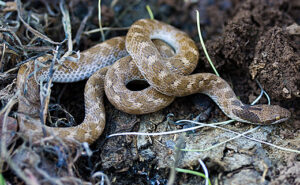If you’ve ever wondered, are snakes nocturnal, you’re not alone. Many people are curious about the natural behavior of snakes, especially when it comes to their activity patterns. Snakes, like all animals, have specific habits shaped by their environment and biology, and their activity cycles can vary greatly between species.
Understanding these patterns is important for both wildlife enthusiasts and pet owners, as it can help you better appreciate their behavior and ensure their well-being. This article will explore whether snakes are nocturnal, the reasons behind their activity patterns, and how they adapt to their environments to thrive.
(lwptoc]
What Does It Mean to Be Nocturnal?

Before diving into the specifics of snake behavior, it’s essential to understand what “nocturnal” means. The term “nocturnal” refers to animals that are primarily active during the night and rest during the day. These animals have evolved to thrive in the darkness, using their sensory systems and behaviors to compensate for the lack of light.
There are other terms that describe different activity patterns in animals:
-
Diurnal: Animals that are active during the day and sleep at night.
-
Crepuscular: Animals that are most active during the twilight hours of dawn and dusk.
Each of these activity patterns has evolved as a response to environmental pressures like temperature, food availability, and predator-prey dynamics.
Are Snakes Nocturnal?
The short answer is that it depends. Some snakes are nocturnal, while others are diurnal or crepuscular. Snakes’ activity patterns can vary significantly based on their species, geographic location, and environmental conditions. Generally speaking, many snakes are more active at night, but not all of them.
In the wild, the majority of snakes, especially those in warmer climates, tend to be nocturnal. However, there are also plenty of species that are active during the day or at dawn and dusk. The key to understanding why some snakes are nocturnal while others are not lies in their biology and the ecosystems they inhabit.
Why Do Some Snakes Prefer Nighttime?
Several factors influence why certain snakes are more active at night. These factors include temperature regulation, predator avoidance, and hunting habits.
1. Temperature Regulation
Snakes, like all reptiles, are cold-blooded, meaning they rely on external temperatures to regulate their body heat. During the day, the sun can cause extreme heat, making it difficult for snakes to stay cool. At night, when temperatures drop, snakes are more comfortable, and they can avoid the risks of overheating.
Nocturnal snakes benefit from the cooler, more stable temperatures at night, allowing them to remain active for longer periods without risking heat exhaustion. This is particularly important for species that live in desert or arid environments, where daytime temperatures can soar above 100°F (37°C).
2. Predator Avoidance
Nighttime offers a safer environment for many species of snakes, particularly for those that are preyed upon by diurnal predators such as birds of prey. By remaining active at night, snakes reduce the risk of encountering predators that hunt during the day. This nocturnal behavior helps them avoid detection and increases their chances of survival.
3. Hunting Habits
Some snakes are nocturnal because their prey is most active during the night. Rodents, amphibians, and other small animals that snakes hunt are often more active at night. Nocturnal snakes have evolved specialized hunting skills that allow them to hunt efficiently in the dark. For example, some species have highly developed heat-sensing pits on their faces that enable them to locate prey by detecting their body heat.
Species-Specific Activity Patterns
Snakes are a diverse group, and different species exhibit various activity patterns. Here are some examples of snake species and their typical activity times:
| Snake Species | Activity Pattern | Habitat | Notable Traits |
|---|---|---|---|
| Ball Python | Nocturnal | Forests and grasslands | Prefers cooler temperatures, often active at night. |
| Corn Snake | Diurnal | Forests, grasslands, and farmlands | Active during the day, often hides under debris. |
| Timber Rattlesnake | Crepuscular | Woodlands and grasslands | Active at dusk and dawn, avoids high heat. |
| King Cobra | Diurnal | Southeast Asia’s forests | Active during the day, relies on daylight for hunting. |
| Black Mamba | Diurnal | Savannas and woodlands of Africa | Often active during the day, but can be active at night in certain climates. |
While some species are strictly nocturnal, others show a preference for daytime or twilight activity. This variation reflects the unique adaptations of each species to its environment and lifestyle.
How Snakes Adapt to Nocturnal Life

Nocturnal snakes have evolved several unique adaptations that allow them to thrive in low-light conditions. These adaptations include specialized senses, behavior patterns, and physical traits.
1. Heat-Sensing Pits
One of the most fascinating adaptations of nocturnal snakes is their ability to detect infrared radiation from warm objects. Many species, such as pit vipers and boas, have specialized heat-sensing pits located between their eyes and nostrils. These pits allow them to “see” the heat emitted by their prey, even in total darkness. This ability is especially useful for hunting at night, when visual cues are limited.
2. Specialized Vision
While snakes generally don’t rely heavily on their vision, many nocturnal species have better-developed eyes that allow them to detect movement and light in low-light conditions. Some species can see in a broader spectrum of light, such as ultraviolet light, which can help them navigate and hunt during the night.
3. Camouflage
Camouflage is another vital adaptation for nocturnal snakes. Many nocturnal species have muted, earth-toned colors that blend seamlessly with their surroundings, making them nearly invisible in the dark. This helps them avoid detection by both prey and predators.
4. Slow and Stealthy Movement
Nocturnal snakes often move slowly and deliberately to conserve energy while hunting. This stealthy behavior ensures they don’t alert potential prey or predators. Many nocturnal species also hunt by ambushing their prey, remaining perfectly still until the right moment to strike.
Nocturnal Habits: Feeding, Hunting, and Hiding
1. Feeding at Night
Nocturnal snakes feed primarily on small mammals, birds, amphibians, and other reptiles. They rely on their specialized senses to locate and capture prey, often waiting in ambush or actively hunting. Prey that is active during the night, such as rodents, frogs, and insects, provides an ideal food source for these snakes.
2. Hunting Techniques
Many nocturnal snakes use an ambush strategy to hunt. They will find a concealed location, such as a burrow or underbrush, and wait for prey to pass by. Once a potential meal comes within range, the snake strikes with lightning speed. The heat-sensing pits of pit vipers, for example, allow them to detect the body heat of warm-blooded animals, guiding their strike.
3. Resting During the Day
During the day, nocturnal snakes rest to conserve energy. They seek shelter in cool, hidden places such as burrows, cracks in rocks, or dense vegetation. These hiding spots provide protection from predators and the sun’s heat.
How to Identify Nocturnal Snake Behavior (For Pet Owners)
If you’re a snake owner, understanding your pet’s natural activity cycle is crucial for its health and well-being. Nocturnal snakes will typically be most active in the evening and night, while they will rest during the day.
To accommodate a nocturnal pet snake, ensure that its enclosure mimics the conditions of its natural environment:
-
Provide dim or red lighting to avoid disrupting their circadian rhythm.
-
Maintain an appropriate temperature gradient, with a cooler area for resting during the day.
-
Offer hiding spots where your snake can retreat when it needs rest.
Creating the right environment will help your snake feel comfortable and reduce stress, promoting a healthier, happier pet.
Risks and Benefits of Being Nocturnal
Benefits:
-
Avoidance of predators: Nighttime activity helps avoid daytime predators.
-
Cooler temperatures: Nocturnal snakes can avoid the intense heat of the day.
-
More food availability: Many prey species are active at night, providing a reliable food source.
Risks:
-
Limited visibility: Snakes must rely on their other senses, such as heat detection, which may not always be reliable.
-
Difficulties in finding mates: Mating may be more challenging when both the snake and potential mates are less visible.
-
Increased risk of injury: Movement in low-light conditions can lead to accidents.
Conclusion
Are snakes nocturnal? The answer is that it depends on the species. While many snakes are indeed nocturnal, there are plenty of species that are diurnal or crepuscular. Snakes have evolved a variety of behaviors and physical traits to suit their environment, whether it’s cooler nighttime temperatures, avoiding predators, or hunting in the dark.
By understanding the reasons behind snake activity patterns, we can gain a deeper appreciation for their behavior, both in the wild and as pets. Whether nocturnal or not, snakes are fascinating creatures that continue to intrigue and captivate those who study them.

